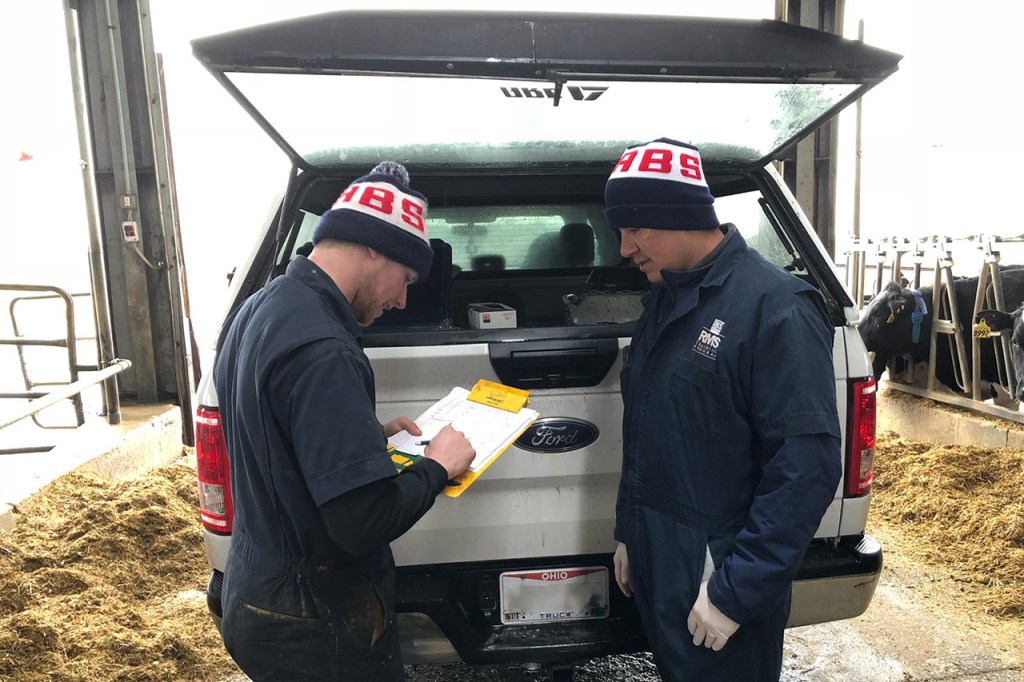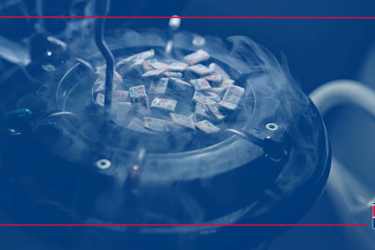Written by Anibal Ballarotti for Progressive Dairy
A successful reproductive performance is fundamental to keep a dairy farm profitable. But how exactly can we measure repro success? Basically, this is measured by how fast we can turn non-pregnant cows into pregnant cows. The primary metric used to do this is by calculating the 21-day pregnancy rate (PR), which is defined by the total number of pregnant animals divided by the total number of eligible cows during a given time frame.
[READ: 5 Tips for Happy, Loyal Employees]
Effective reproductive strategies to achieve high 21-day PR can integrate different types of programs. Among the most common are tail chalking for detection of estrus followed by artificial insemination (A.I.) or protocols of synchronization of ovulation and timed A.I. Either strategy can be used for the first insemination or after early non-pregnancy diagnosis. No matter what strategy is used, both need a qualified repro team to perform either or both programs.
Please note that we are addressing improvement in your reproductive team. We are not saying group; we are not saying individuals. According to Bernie Erven from the Ohio State University, it is important to understand the differences among these three levels of work relation:
- Individuals are people who work independently of each other and do not have any sense of mutual help. Their success does not depend on other people, no matter how close they are working with others on their tasks.
- Group can be defined as several people working for common goals but still playing their roles independently of each other.
- Team, on the other hand, can be described as several people working together as an integrated unit to achieve the same goals. They share successes and failures, learn together and build trust among the team members.
Building a successful team is not an easy endeavor, and the person with that responsibility must be someone trusted by each team member. The exceptional leader, perhaps the dairy manager, will work tirelessly to keep and improve a good relationship among members, improve communication by listening carefully and speaking up when needed, as well as identify personal traits of each individual member to encourage them to give their best for the benefit of the group. Clear rules need to be followed by everyone, and in the same way, the whole group needs to be part of any decision that will affect the entire group. Once the team leader is able to identify every single personality and give each one their own voice, it will be easier to achieve these advantages of building a strong team:
- Higher efficiency in the use of resources
- Higher commitment when setting goals, procedures and rules
- Higher productivity by inspiring every member to learn new skills from each other, since everyone has their weaknesses and strengths
- A higher sense of learning environment that will create an atmosphere of trust and, in consequence, a pleasant place to dedicate many hours of the day, by a happier worker
As soon as we are confident that we are going in the right direction to build a class A team for the dairy’s reproductive strategies, we need to identify and monitor the skills needed to raise the team’s proficiency. It’s also critical to determine when refresher training sessions are needed to keep improving fertility performance. As mentioned above, the most common strategies in dairy farms to improve genetics are through detection of estrus followed by A.I. or timed-A.I. protocols.
[READ: 6 Reasons Your Timed A.I. Program is Failing]
Four fundamental skills
A.I. based on detection of estrus is still one of the most important technologies developed in the last century, and genetic improvement through this technology has been essential to attend the increasingly higher global demand for protein. There are four fundamental skills that team members need to master for the team to be proficient. (These steps should be done in headlocks):
- Every single cow must be tail chalked or painted every single day with a uniform amount of coverage in order to check the next day if paint has been removed or slightly touched.
- Consistency of the chalk or paint is fundamental to “read” the mark the next day. A mark completely removed is considered a primary sign of heat; however, marks that are only partially rubbed off “invite” the technician to look for other (secondary) signs of heat. A correct interpretation of these signs of heat is fundamental to make the best breeding decision.
- An accurate record-keeping system will allow the technicians to make the correct breeding decision based mainly on the reproductive status of the questionable cow: days in milk (DIM), days since last heat and number of services to know what sire should be used in case of estrus.
- A.I. technicians must be very familiar with secondary signs of estrus in order to make the best breeding decision. Secondary signs include: presence of mucus or discharge after proceeding a transrectal palpation of a questionable cow, swelling and color of the vulva, presence of saliva and lick marks on the back of the cow, and uterine tone can be an excellent indicator also through a transrectal palpation and scored from 1 (flaccid) to 5 (turgid).
A.I. following an ovulation synchronization program is a technology that uses a hormonal synchronization protocol that does not require detection of estrus. Instead, it allows for timing of the insemination; thus, more animals can be submitted for artificial breeding. The first synchronization protocol for cows was developed only about 25 years ago, in 1995. Since then, many other timed-A.I. protocols have followed that have improved fertility performance and genetic advancement.
The most important requirement for a timed-A.I. protocol is simple: Strictly follow the protocol. Compliance is critical for this type of strategy. Any cow missed, any injection missed, any wrong timing compromises the timed-A.I. protocol. If we cannot trust our repro team to achieve 100% of the tasks, we might forget about implementing this type of strategy. Frequent training sessions encourage team members to develop a system to ensure the right animal takes the right hormonal injection at the right time. For instance, in a PreSynch/Ovsynch protocol, even 95% compliance is not enough, because that lack of 100% of efficiency in all the injections turns into 77% of cows synchronized at the timed A.I.
It’s important to understand that there is not only one “right way” to manage reproduction on a dairy farm. The detection of estrus or timed A.I., or even both combined, can be effective to achieve a great 21-day PR. One of the most important factors is to continue offering refresher training to the team at least once annually to make sure all team members are doing their best to make the dairy farm profitable by way of making more pregnancies.
Anibal Ballarotti. Consultant – ABS Global.
Originally published in Progressive Dairy






